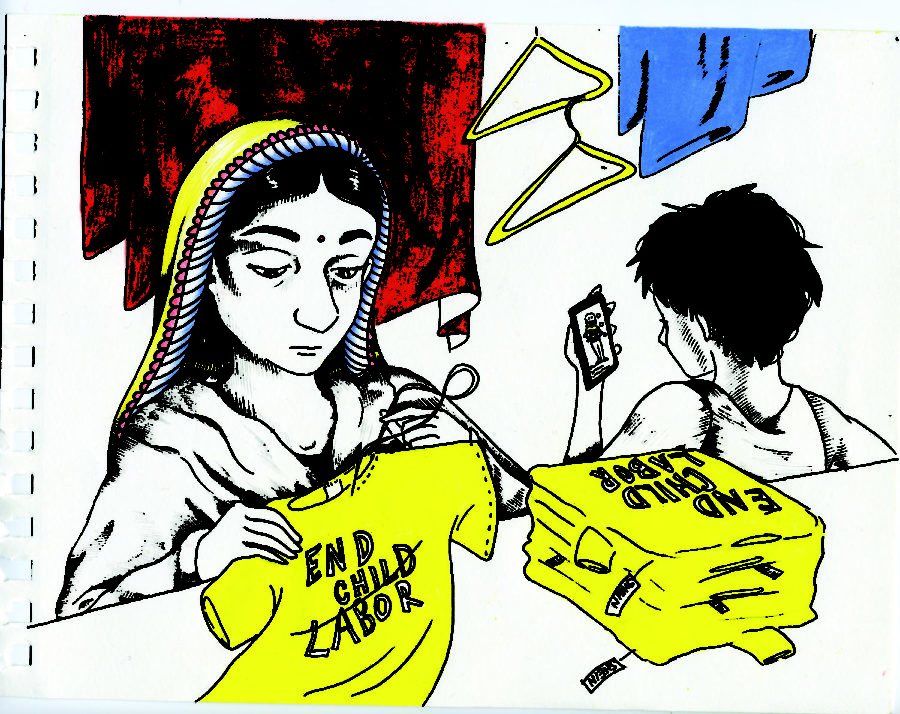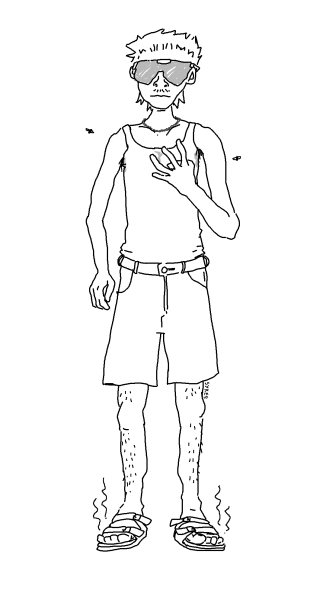Trend-following TikTok users contribute to unsustainable “fast fashion” industry
Labor workers make clothing to sustain fast fashion trends fueled by tiktok.
TikTok, in its height of internet popularity, is known for its influential style trends. However, these fashion trends are constantly changing, making it impossible to keep up without purchasing from cheap clothing sites. Instead of funneling money into unethical, environmentally-damaging “fast fashion” companies, trend-following TikTok users should construct their dream wardrobes from more sustainable clothing shopping options.
In July of 2019, TikTok overtook the Internet. According to the British Broadcasting Corporation (BBC), in July 2019, TikTok achieved one billion downloads worldwide, of which 500 million were active users. Just one year later, the app amassed two billion downloads and 800 million active users. TikTok’s influence on teen fashion is unavoidable. However, shopping on unsustainable clothing sites is much easier to avoid.
According to Wallaroo Media Company, 60 percent of TikTok users are between the ages 16 and 24, meaning the primary audience for fashion trends is the impressionable young generation, who yearn to model their wardrobes after their favorite influencers. Expedited byTikTok’s algorithm, trends cycle through the app faster than users can refresh their “For You” pages. From alternative, to Y2K, to cottage core, users often resort to the worst possible option to satisfy their quickly-changing style cravings: fast fashion.
Within the past few years, Shein, a newly popular women’s “fast fashion” clothing brand, became the new craze for teenagers looking for affordable and trendy clothes to bolster their wardrobes and fit the TikTok “ideal.” According to Coresight Research, Shein gained 10 billion dollars in revenue in 2020, mirroring the appalling growth in TikTok’s popularity. During this time, TikTok users popularized the “Shein haul” video trend, dumping out pounds of plastic packages onto their floor to showcase their new cheap, stylish clothes. By encouraging frequent, mass consumption of clothing to “keep up with TikTok trends,” Shein swallows up young, trend-seeking TikTok users at environmental costs.
According to Business Insider, Shein adds nearly 3,000 new styles to its site every day at significantly lower prices than its competitors, which add around 500 new styles per week (hence “fast” fashion). By selling items at shockingly low prices, all the while exploiting the underpaid labor of workers in Nanjing, China, it’s easy to fall into Shein’s devious trap.
Sustainability is about buying and consuming less, but the temptingly low prices of Shein and other fast fashion companies discourage sustainability. So, it’s time that we stop funneling money into harmful companies like Shein, and rather promote sustainable – yet still affordable – ways to shop. You can still achieve the style that you desire, without supporting harmful corporations.
On TikTok, anything can become a trend. So, let’s start the trend of turning away from the Shein haul videos and fast fashion advertisements that the TikTok algorithm shoves into our faces, and instead shopping at more sustainable (yet still affordable) online thrift sites like Depop or ThredUp. Next time you refresh your “For You” page to derive fashion inspiration, think twice about the app that you toggle between to purchase the look.
Your donation will support the student journalists of Archie Williams High School. Your contribution will allow us to purchase equipment and cover our annual website hosting costs. Each donation will receive a magazine subscription for a year (6 copies a year), and become a part of the important work our publication is doing.
$35 -- Subscription to the magazine
$50 -- Silver Sponsorship
$75 -- Gold Sponsorship
$100 -- Platinum Sponsorship

Ava is a senior, starting her first year in journalism. She loves ear piercings, super spicy sushi from restaurants in San Francisco and roaming the aisles...













